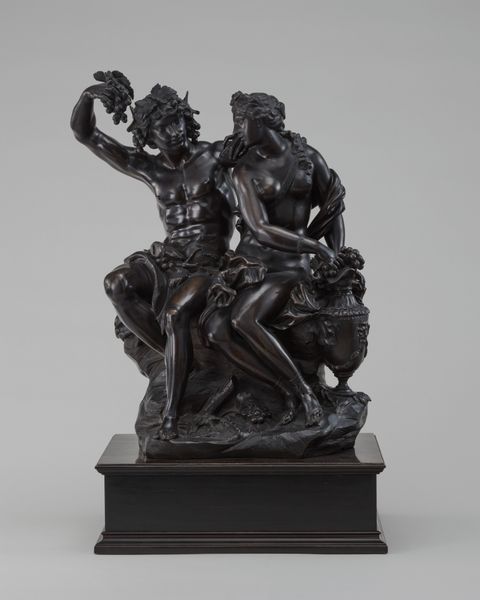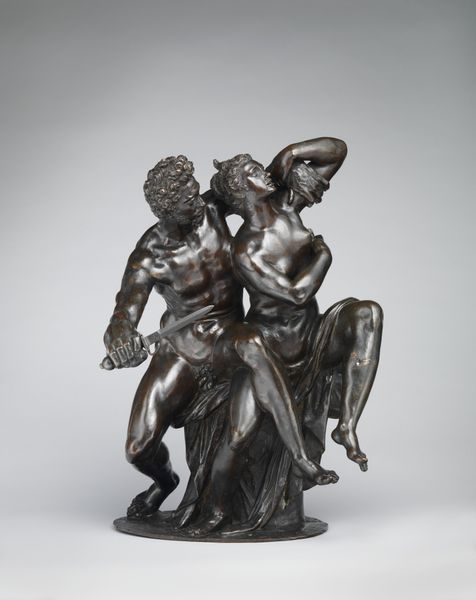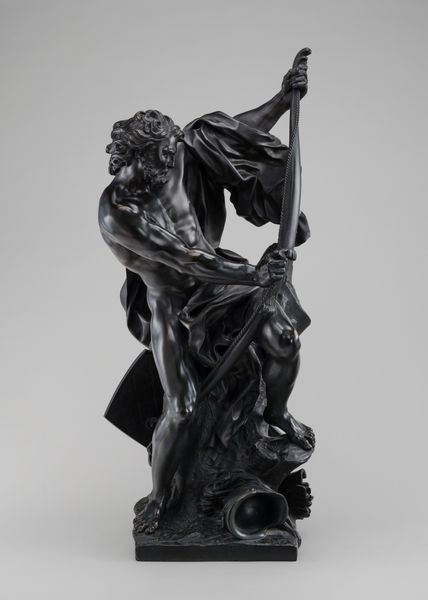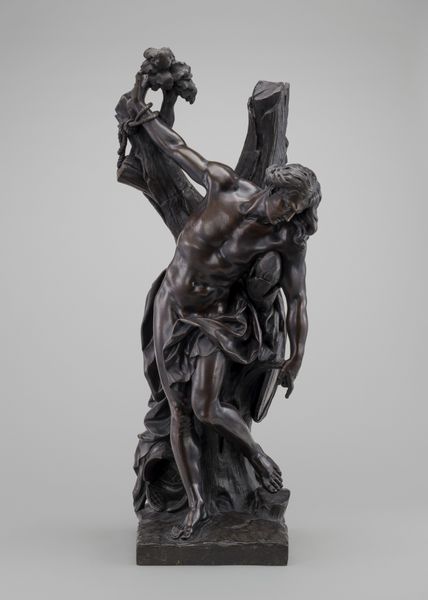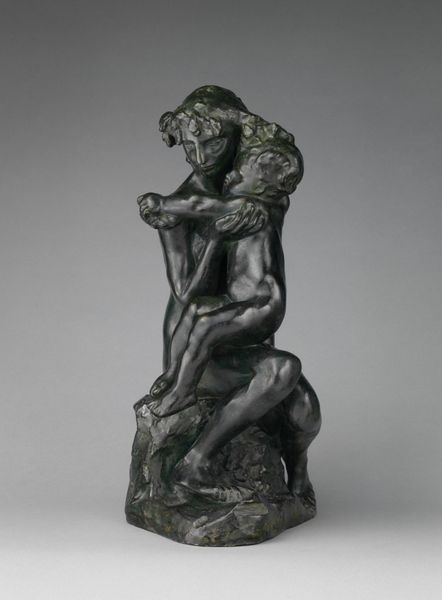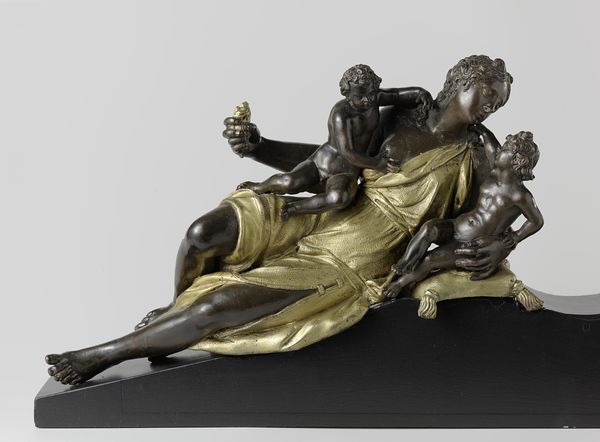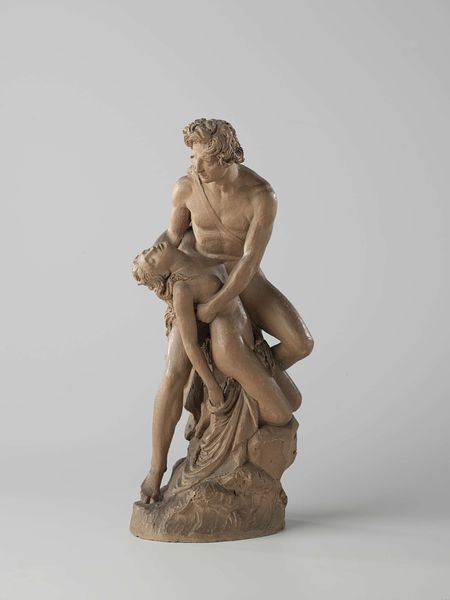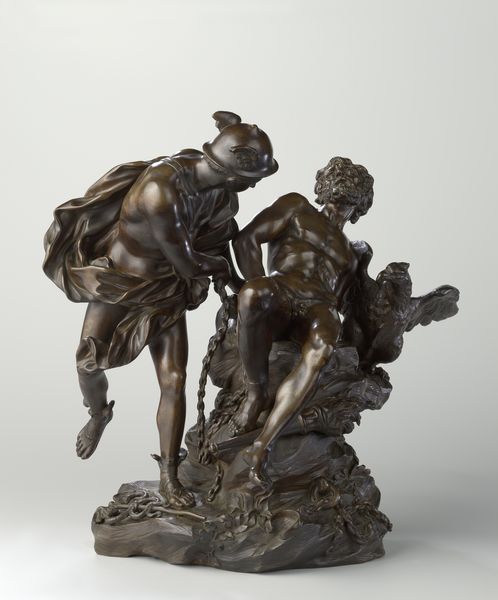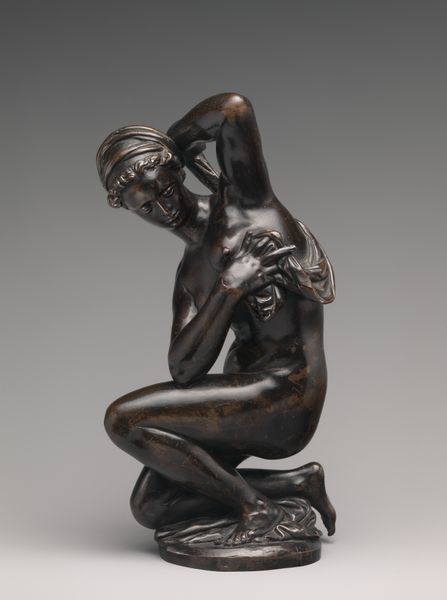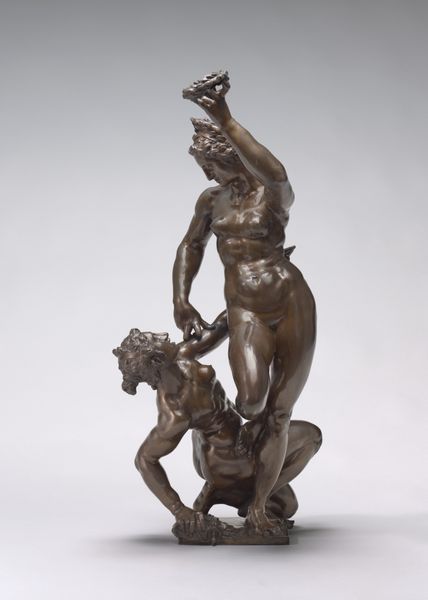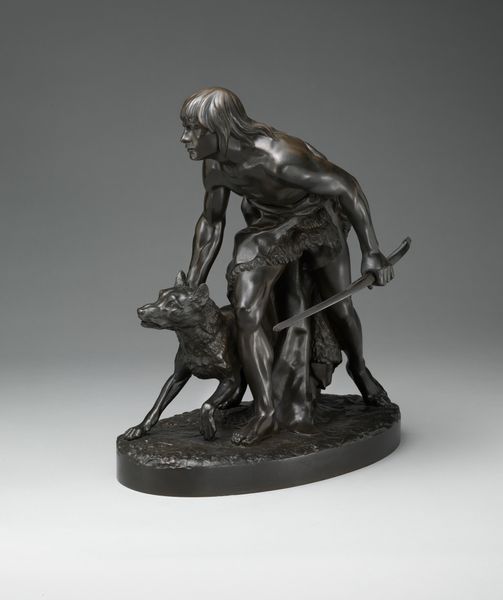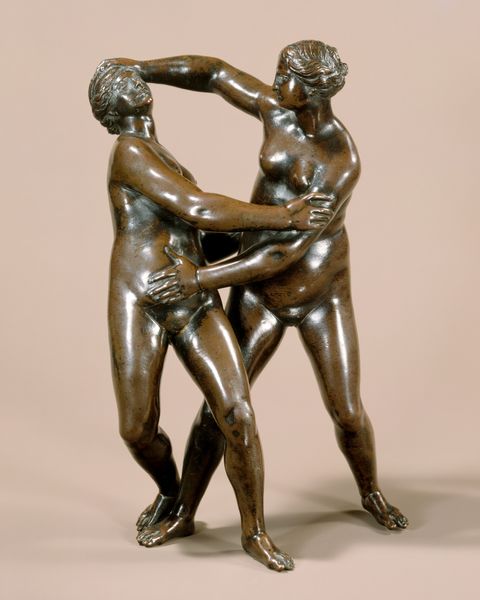
bronze, sculpture
#
sculpture
#
bronze
#
mannerism
#
figuration
#
sculpture
#
genre-painting
#
history-painting
#
nude
#
statue
Dimensions: height 42 cm, width 44.5 cm, depth 25 cm, weight 25.7 kg
Copyright: Rijks Museum: Open Domain
Curator: Well, this is a charged little scene. Makes you a bit uncomfortable, doesn’t it? Editor: Absolutely. It's got this really visceral energy, a contained violence almost. The figures are intertwined, but there's no sense of tenderness, just struggle. Curator: That would be Adriaen de Vries’ bronze sculpture, “Sextus Tarquinius and Lucretia,” likely crafted somewhere between 1600 and 1700. It depicts a scene from Roman history. Editor: And what a scene. The abduction and rape of Lucretia by Sextus Tarquinius, son of the Roman king, which, of course, famously led to the overthrow of the Roman monarchy and the establishment of the Republic. It's all about power, transgression, and the violation of autonomy. Curator: Power, yes, but also vulnerability. Look at Lucretia’s twisted pose, that desperate reach. It feels…well, performative almost. The Mannerist style really lends itself to the drama. And I think that’s interesting too, to frame the scene, literally. Editor: It’s important to look critically at these historical representations of violence, particularly sexual violence, to acknowledge that these narratives have very real impacts, they inform our current perceptions of these acts, and the sculpture is literally displayed, inviting the visitor’s gaze. The way she's positioned, there’s this expectation that we, as viewers, participate, too. Curator: But maybe there is also an acknowledgement of trauma, a moment frozen. Consider De Vries’ artistic liberty, crafting such tension and movement in solid bronze. What does it really communicate, if not a deeper story than we were taught. I see complexity in the bronze's patina, and maybe he sees the human complexity of trauma. Editor: Perhaps, but it's still filtered through a male gaze, no? The story, historically, is about a woman’s violation but the actions of powerful men in response. This narrative shifts the attention away from the victim, placing it firmly on masculine anger and agency. Curator: Well, I suppose it all means we can’t walk by assuming it's just “history”. We’re caught, still, in a thorny dialogue, trying to unpack these complex intersections of power, gender, and history. It might just keep me up tonight. Editor: Hopefully it’ll make others consider these kinds of representations from a much more intersectional and trauma-aware lens too.
Comments
No comments
Be the first to comment and join the conversation on the ultimate creative platform.
